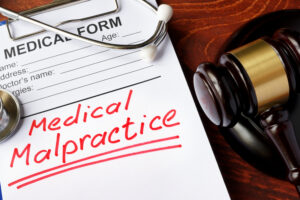 When you visit a health professional, you certainly expect quality care from them. With the symptoms you’re feeling, you want answers from them to ensure your recovery. However, there are instances in which your doctor or other healthcare practitioner has made a mistake in your diagnosis or treatment. This scenario is known as medical malpractice.
When you visit a health professional, you certainly expect quality care from them. With the symptoms you’re feeling, you want answers from them to ensure your recovery. However, there are instances in which your doctor or other healthcare practitioner has made a mistake in your diagnosis or treatment. This scenario is known as medical malpractice.
Primarily, medical malpractice happens when a health professional, by negligence, fails to exercise the reasonable duty of care required from them, causing an injury to a patient. But, due to the complexity involved in this legal matter, you might be confused about the steps you should take to handle a medical malpractice case. Consequently, you might be unable to protect your rights and interests from the beginning.
Below are the four steps to take if you suspect medical malpractice from your health professional:
- Look For A Second Medical Opinion
 If you believe you’re a victim of medical malpractice, you should first seek a second medical opinion. By doing this, you can determine whether your doctor is at fault for what happened. For instance, your second health professional will check your medical history and request laboratory tests to look for the medical error.
If you believe you’re a victim of medical malpractice, you should first seek a second medical opinion. By doing this, you can determine whether your doctor is at fault for what happened. For instance, your second health professional will check your medical history and request laboratory tests to look for the medical error.
After receiving the second medical opinion, make sure to get yourself treated right away to avoid a more complicated health condition. Remember, seeking medical care can be crucial for filing a medical malpractice case against your health professional. Without it, you might have difficulty proving your claim.
2. Retain An Attorney
Now that you determine the medical error committed by your health professional, the subsequent step is to hire the best San Diego medical malpractice attorney or wherever you may be for assistance. Unless you’re an expert in malpractice laws, you need the services of a legal professional to help you navigate your situation. They can analyze the facts of your case and advise you about the legal remedies you have against the at-fault party. They can guide you through the process to make sure you obtain a more favorable outcome. They can also offer you solid legal representation to ensure your rights are fully protected.
On the other hand, when looking for the right attorney, it’s essential to consider some credentials, including experience, reputation, fee structure, availability, responsiveness, and communication skills. By doing so, you’ll know your potential attorney better, making the hiring process much easier and faster.
3. Gather Evidence
When you’re injured due to a medical practitioner’s negligence, it’s important to collect certain pieces of evidence to prove your medical malpractice case. Like other personal injury cases, the evidence-collection process is essential for a successful claim. You can’t sue the health professional for negligence without presenting any proof to support your allegation. Failure to do so can adversely affect your chances of winning your lawsuit and obtaining the compensation you need.
Typically, some standard pieces of evidence you should gather for your medical malpractice claim can include:
- Medical records, including laboratory test results and prescriptions
- Conversations with the erring health professional
- Evidence of the injury, such as photos and videos
- Expert witness testimonies
- Records of losses, including payroll records
4. File A Medical Malpractice Case
If you suspect medical malpractice from your health professional, the last step you should take is to bring a case in court against the responsible party. Generally, a medical malpractice lawsuit is necessary if you want to hold the erring medical practitioner accountable for your injury to recover compensation.
To have a successful case, you need to establish the elements of negligence. These can include:
- Duty Of Care: You should prove that the doctor or health professional has a duty of care toward you as a patient. This means that the doctor-patient relationship existed between you and the doctor.
- Breach Of Duty: You should also demonstrate that doctor violated their duty of care through negligence, which resulted in a significant injury.
- Injury: You should show the direct connection between your health professional’s negligence and the injury you sustained. In other words, you should have proof that the injury wouldn’t have been suffered without the negligent acts.
- Damages: To have a strong malpractice claim, you need to prove that the injury caused by someone else’s negligence resulted in damages or losses. Some common examples can include medical expenses, lost wages, emotional distress, pain and suffering, and similar situations.
When filing a malpractice case, you also need to be extra careful with the statute of limitations applicable in your state. This means you should file your lawsuit within the timeline provided by your state law. Failing to do so might result in losing your right to bring a case forever.
Bottom Line
Medical malpractice is a legal matter that shouldn’t be taken seriously. Without adequate knowledge about this area of law, you might be unable to safeguard your rights and get compensated with the amount of money you deserve. Therefore, if you believe you’ve become a victim of medical malpractice, keep the information mentioned above in mind. Doing so can help you better understand your situation and take the right approach to ensure a good result for your case.
